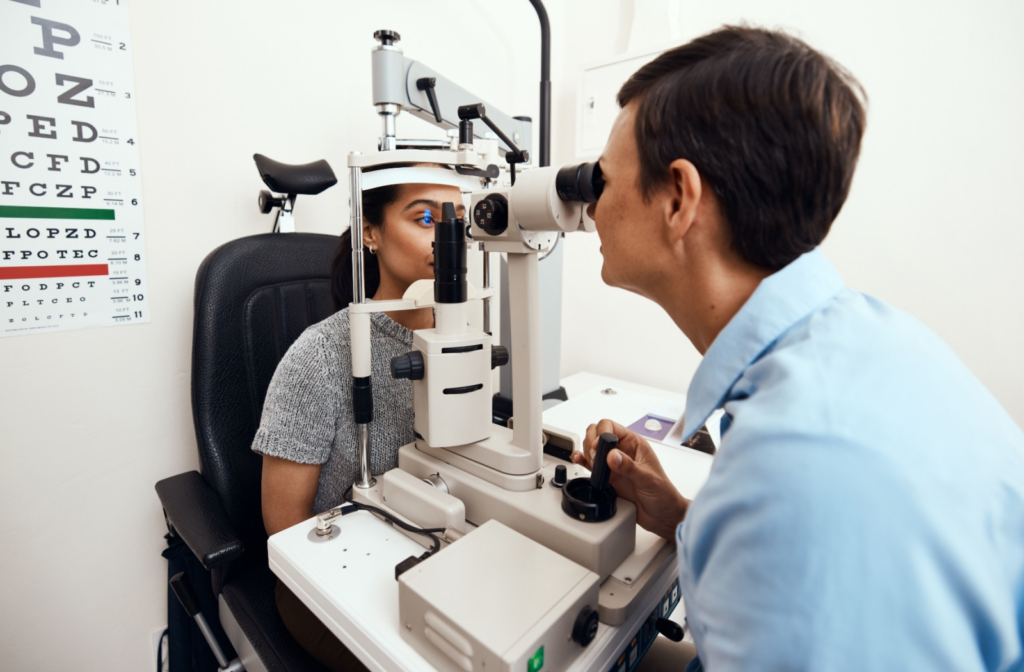Eye prescriptions come with expiry dates. These dates mark the point at which the prescription is no longer considered accurate for safe and effective use.
In the US, prescriptions for glasses and contact lenses are valid for just one year. However, there are several factors that influence these timelines, including age, eye health, and medical history.
What Determines Prescription Validity?
The length of time that a prescription is valid for depends on a number of elements.
Age & Growth
For children and teenagers, the eyes are still developing. Vision can shift more rapidly during these years, which is why prescriptions for younger patients are often written with shorter validity periods. For adults, prescriptions may remain stable for longer, but changes still occur over time.
- Children and adolescents usually receive prescriptions valid for one year
- Adults typically receive prescriptions lasting for one year depending on state regulations
- Older adults may require more frequent monitoring as age-related conditions develop
Ocular Health & Medical Conditions
The state of a person’s eye health and their overall wellness also influence how long a prescription should last. If a person has an eye disease or a systemic condition that can affect vision, their prescription may be valid for a shorter time.
Conditions that may shorten prescription validity include:
- Diabetes, which can cause fluctuating vision
- High blood pressure, which affects ocular blood vessels
- The development of cataracts or glaucoma
- Chronic dry eye or corneal conditions affecting clarity
General Optometric Guidelines
In Idaho, guidelines state that prescriptions for glasses should not extend beyond one year. Contact lenses often require annual renewal because the lens sits directly on the eye’s surface and can affect corneal health.
How Long Do Prescriptions Typically Last?
Most optical prescriptions in Idaho fall within a one year window. State regulations may guide the exact length, but the general rule is that prescriptions should not extend longer than one year without a new exam.
- Age considerations: Adults over 65 may need more frequent exams, as eye conditions like cataracts or macular degeneration become more common.
- Occupation and lifestyle: People who spend long hours on digital devices or in visually demanding jobs may require updated prescriptions sooner.
- Specialized prescriptions: Patients with conditions like diabetes, glaucoma, or myopia may receive shorter prescription lengths so their eye health can be monitored more closely.
In Idaho, the average length is one year for glasses, unless health conditions or life stage changes suggest a shorter timeline.
Why Expiry Dates Matter
It may seem like an expiry date is just paperwork, but contact lens expiry dates serve an important purpose.
- They support consistent scheduling of eye exams, which are recommended every year.
- They acknowledge that vision changes gradually and outdated prescriptions may cause strain.
- They help monitor ocular health, catching conditions like glaucoma or macular degeneration.
- They guide safe use of contact lenses, reducing risks of infection or corneal complications.
By following expiry dates, patients can not only maintain accurate vision correction but also benefit from ongoing assessments of their eye health.
Recognizing When a Prescription May Need Renewal
Even if a prescription has not technically expired, certain symptoms can signal that it is time for an update. These signs may appear suddenly or gradually, and ignoring them can affect the comfort and performance of your lenses.
Common reasons to revisit your prescription include:
- Frequent or worsening headaches
- Difficulty focusing on near or far objects
- Squinting to see clearly
- Blurry or fluctuating vision
- Eye strain after reading or screen use
- Contact lenses feeling less comfortable than usual
Addressing these issues early can help prevent further discomfort and identify whether they stem from a prescription change or an underlying condition.
The Role of Comprehensive Eye Exams

Eye exams are the main way that optometrists evaluate overall ocular and systemic health.
During an exam, an optometrist may:
- Assess visual acuity with a standardized eye chart
- Measure refraction to determine lens power
- Check eye coordination and focusing ability
- Examine internal eye structures to detect early disease
- Test for glaucoma through pressure measurements
Even if your vision seems stable, these tests can reveal changes or conditions that may not exhibit symptoms right away. This is why a prescription expiry date is tied closely to the timing of regular eye exams.
Keeping Your Vision Up to Date
Eye prescriptions are more than numbers on paper; they are a reflection of both vision and overall eye health at a specific moment in time. Expiry dates act as reminders to book regular eye exams and highlight the balance between maintaining clear sight and monitoring for potential health concerns.
At Bluebird Vision + Wellness, we help families understand prescription timelines and the value of ongoing eye health assessments. So book an appointment today and let us help you see the world clearly.




